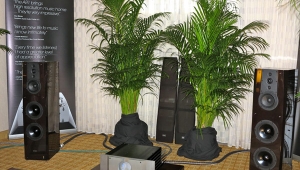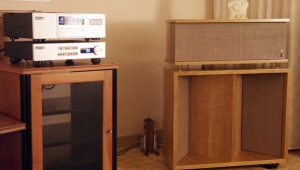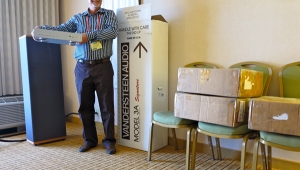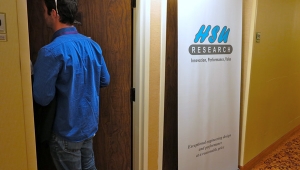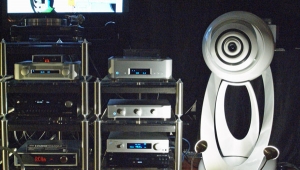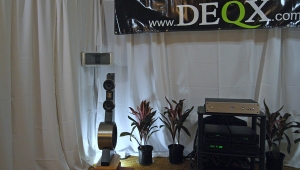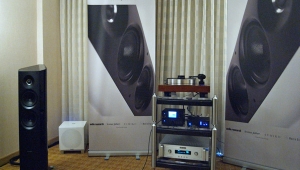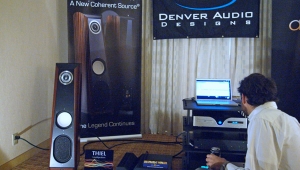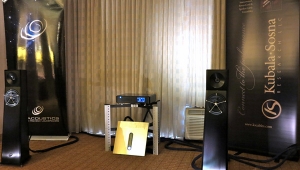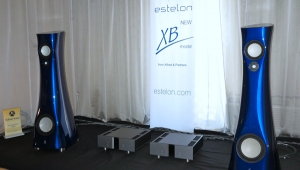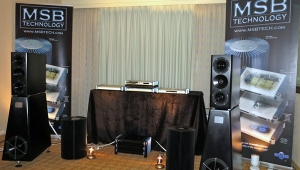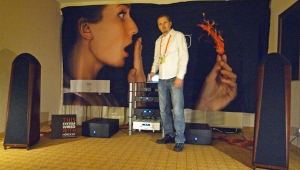| Columns Retired Columns & Blogs |
The Peachtree Way
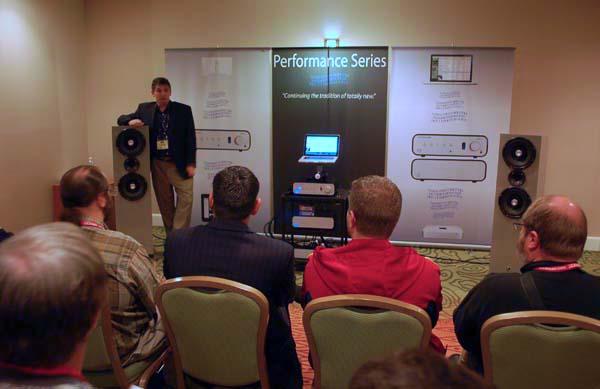
I walked into the big Peachtree Audio room to find listening chairs scattered about in every direction, seemingly without purpose. Indeed, some listeners stood while some listeners sat and even others danced.
This was different.
In addition to a large static display, there were three active systems in the room. The first was built around a pair of Zu Audio Definition Mk.4 loudspeakers ($12,800/pair), being driven by Peachtree’s 220 power amplifier ($1399), a 220Wpc, class-D design; and the company’s Nova PRE preamplifier ($999), which utilizes 24/96-capable asynchronous USB operation.
The music was being streamed from somewhere—perhaps Pandora, perhaps “the cloud,” perhaps even the powerful mind of Peachtree’s Jonathan Derda—first at 320kbps MP3 and later at CD quality. Either way, it sounded good: forceful when called for, laidback when called for, and always compelling and fun.
Describing the new Bang & Olufsen ICE module employed in the Peachtree 220, Derda admitted, “We were skeptical, but all those negative feelings we had about class-D designs were vaporized once we heard what this thing could do.”
We turned our seats around. Moving to a larger, more ambitious system, comprising TAD’s Reference One loudspeaker ($78,000/pair), Peachtree’s David Solomon explained, “We want you to be able to enjoy the speaker you want, no matter what it might be, which is why we built the Grand Integrated.”
The Grand Integrated ($4499) is rated to deliver a massive 440Wpc into 8 ohms, and combines an amp, preamp, tube buffer stage, headphone amp, and a high-quality ESS Sabre DAC into a single, handsome chassis.
Solomon used the fancy-pants system to dem a wide range of music, from CD-quality to 24-bit/192kHz high-res files. Yet, despite the system’s resolving power, Solomon reminded listeners that an incredible world of music exists at lower resolutions—something like 18 million tracks on Spotify, for instance.
“Just keep in mind,” he quipped, “that the higher up we go in terms of resolution, the more pretentious the music gets.”
While Solomon was quick to praise the efforts of streaming services like Spotify, Pandora, and MOG, he also applauded the work of Cookie Marenco’s Blue Coast Records and David Chesky’s HDtracks—companies that offer high-quality sound and music.
Solomon was using a MacBook Pro running the latest version of Amarra, which “finally brings the product into the real world,” with a $189 price tag. Also on display in the Peachtree room was the company’s new X1 Series 24-bit/192kHz-capable, asynchronous USB-to-S/PDIF converter ($199), a bus-powered, plug-and-play design, set to ship next month.
It soon became clear that Solomon and Derda weren’t merely attempting to sell their own products, but that they were attempting to sell an entire way of listening and relating to music. First, Peachtree took note of how people listen to music and responded with products to enhance that experience. Then, they looked at how their customers used Peachtree products and responded again to give their customers exactly what they needed.
“When I want to really listen, sure, I’ll sit down in the sweet spot and bring out my collection, but, most of the time, when I’m cooking or cleaning or playing with the kids, and I want some good music in the background, I’m listening to Spotify,” Solomon continued.
We turned our seats around again, this time to the smallest system in the room: A simple Solid Steel equipment rack held Peachtree’s Decco65 65Wpc integrated amplifier ($899), which easily drove Peachtree’s handsome D5 standmounted loudspeakers ($999/pair); speaker cables and interconnects were provided by Kimber Kable. Solomon streamed MOG’s 320kbps MP3s from his iPhone, and we all enjoyed the music.
“Now, this is fun,” Solomon said. “High-end doesn’t have to come at such an expensive cost.”
Exactly.
- Log in or register to post comments

